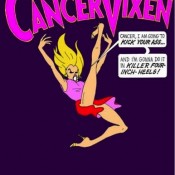Veterans Kick The Prescription Pill Habit Against Doctors’ Orders - Posted By BCC Admin, July 11th, 2014 
“Veterans Kick The Prescription Pill Habit, Against Doctors’ Orders.” By Quil Lawrence, NPR.
For many people with post-traumatic stress disorder, you’ve ever been, at the worst possible moment. “I always see his face,” says Will, who did tours in Iraq and Afghanistan with the Army. “And in my dreams it’s the same thing. … I . . . → Read More: Veterans Kick The Prescription Pill Habit Against Doctors’ Orders
The Fault in Our Stars: Fictionalizing the Realities of Childhood Cancer - Posted By BCC Admin, July 10th, 2014 “The Fault in Our Stars: Fictionalizing the Realities of Childhood Cancer” By Tricia Paul, Investigating Illness Narratives.
“This is not so much an author’s note as an author’s reminder of what was printed in small type a few pages ago: This book is a work of fiction. I made it up.”
. . . → Read More: The Fault in Our Stars: Fictionalizing the Realities of Childhood Cancer
Wild Darkness - Posted By BCC Admin, July 8th, 2014 
EDITOR’S NOTE: I have talked to and read the writings of women living with metastatic breast cancer, and many have made the point that their experiences seem to have no place in today’s cultural conversation about breast cancer. In this excerpt, we wish to give one such woman a place to be heard. You can . . . → Read More: Wild Darkness
Do doctors understand test results? - Posted By BCC Admin, July 6th, 2014 
“Do doctors understand test results?” By William Kremer, BBC.
In 1992, shortly after Gerd Gigerenzer moved to Chicago, he took his six-year-old daughter to the dentist. She didn’t have toothache, but he thought it was about time she got acquainted with the routine of sitting in the big reclining chair and being prodded with pointy . . . → Read More: Do doctors understand test results?
Dealing with symptoms, not disease - Posted By BCC Admin, July 4th, 2014 
“Dealing with symptoms, not disease.” By Dennis Raphael, The Spectator (Canada).
I recently wrote a piece in The Hamilton Spectator chastising the major disease associations for neglecting research findings that adverse living and working conditions are the primary causes of chronic disease during adulthood (Why are Canadians not being told the truth about disease?, . . . → Read More: Dealing with symptoms, not disease
Documenting the invisible scars of breast cancer treatment - Gayle Sulik PhD, July 1st, 2014 
Some breast cancer treatments leave visible scars. Others, though common and devastating, are rendered invisible both by the medical frameworks that fail to document them and the public discussions that drown them out with rhetoric. Two taboo topics in breast cancer? sexuality and side effects. An anthropologist in Spain breaks the silence.
Ana Porroche-Escudero published . . . → Read More: Documenting the invisible scars of breast cancer treatment
Learning the difference between medicine and the medical industry - Posted By BCC Admin, June 30th, 2014 
“Learning the difference between medicine and the medical industry.” By Nathaniel P. Morris, The Boston Globe.
Last month, I was standing in an intensive care unit, wearing my white coat and trying to look like I knew what I was doing. My third year of medical school had just begun. It was my first day . . . → Read More: Learning the difference between medicine and the medical industry
No Need for Routine Pelvic Exams - Posted By BCC Admin, June 30th, 2014 
“No Need for Routine Pelvic Exams.” By Charles Bankhead, MedPage Today.
Average-risk, asymptomatic women do not benefit from pelvic exams as part of routine care and face potential harms from false-positive results, according to a new clinical guideline. A review of more than 60 years’ worth of medical literature did not produce compelling evidence that . . . → Read More: No Need for Routine Pelvic Exams
What the Reduction in Tonsillectomies Teaches Us About Medicine - Posted By BCC Admin, June 30th, 2014 
“What the Reduction in Tonsillectomies Teaches Us About Medicine.” By Aaron Carroll, The New York Times.
When I was a child, one of my favorite books was “Curious George Goes to the Hospital.” It told the story of a little monkey who swallowed a puzzle piece, needed an operation to . . . → Read More: What the Reduction in Tonsillectomies Teaches Us About Medicine
Which journalists reported an extra dimension on the 3-D mammography story? - Posted By BCC Admin, June 25th, 2014 
“Which journalists reported an extra dimension on the 3-D mammography story?”By Gary Schwitzer, Health News Review.
Faithful to the latest journal article, many news organizations dutifully reported what they were told by authors of a study published in the Journal of the American Medical Association, “Breast Cancer Screening Using Tomosynthesis in Combination with Digital Mammography.“ . . . → Read More: Which journalists reported an extra dimension on the 3-D mammography story?
|
|


